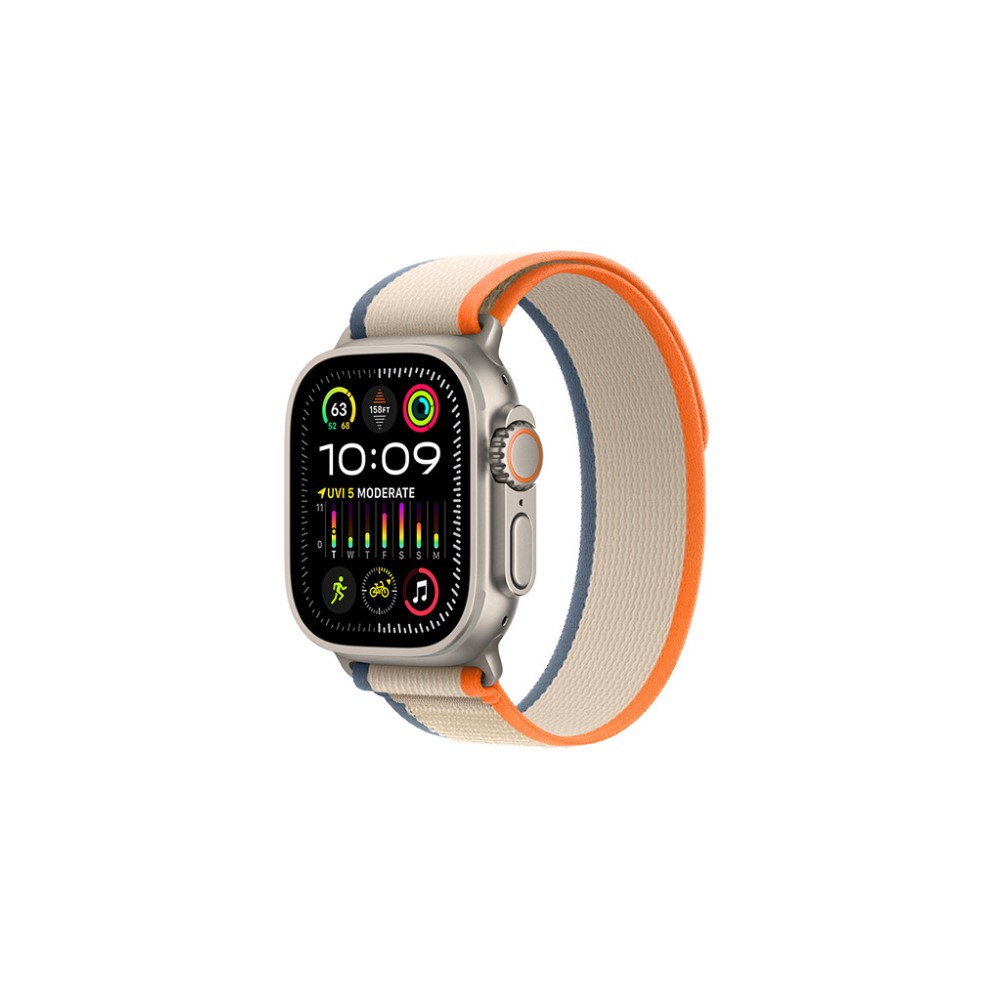Affiliate links on Android Authority may earn us a commission. Learn more.
Samsung let me down with the Galaxy Watch Ultra

I was one of the few Samsung Galaxy Ultra defenders before its launch. The early leaked images had some covering their children’s eyes, but I gazed on, intrigued by the quirky styling. In my original opinion piece, I stated that Samsung’s “chunky and brutish styling” could theoretically allow more room to innovate. However, the new ultra-expensive Samsung wearable hasn’t done much to maximize its divisive design. And if anything, I’ve been left disappointed by an overpriced smartwatch that doesn’t bring anything revolutionary to my wrist.
Sauce with little substance

A few weeks before its debut, I wrote that Samsung’s exciting new design and thicker body could allow for more innovative packaging, including space for a larger battery and a host of additional kit. Of course, this was well before any tangible details of the device were available. However, Samsung has opted for a more conservative approach than I had hoped, which doesn’t maximize the design’s potential.
Despite its revised design, it uses the same size battery as the Galaxy Watch 5 Pro and the same size display as the Galaxy Watch 6 Classic — two older, cheaper, and more approachable smartwatches.
Unless you're planning a trek up Everest or a dive along the Great Barrier Reef, you'll never test the watch's 10ATM durability or altitude/temperature credentials.
Samsung would argue that the new Ultra design allows for a theoretically indestructible smartwatch thanks to its grade 4 titanium shell and protective display bumpers. Unless you plan a trek up Everest or a dive along the Great Barrier Reef, you’ll never test the watch’s 10ATM durability or altitude/temperature credentials. If anything, the more extreme users this watch is trying to attract will likely opt for specialized equipment. The lack of a meaningful battery capacity upgrade and broader display to match the larger dial disappoints general users like me.
Beyond its divisive skin, most of the Galaxy Watch Ultra’s core new features are software-based, making the hardware largely redundant. Granted, it features a third button, an emergency siren, more LEDs for better health tracking, and a new strap fastening system. However, most users will gain more tangible benefits from Wear OS 5, which will land on Samsung’s older watches in due course.
Additionally, it shares its internals with the cheaper Galaxy Watch 7. Most new features, including Energy Score, sleep apnea monitoring, and Galaxy AI-powered features, will still require a Galaxy smartphone, making upgrading a fruitless prospect for other Android phone users.
Do you think the Galaxy Watch Ultra is overpriced?
Higher price, less value

More importantly — and as the most glaring strike against the Ultra — its upgrades are not worth the steep asking price. At $649, the Galaxy Watch Ultra is the most expensive Samsung smartwatch, dwarfing its predecessors by hundreds of dollars.
If you can’t quantify that number, here’s a more tangible comparison. You can purchase two Galaxy Watch 7 models for $50 less than one Galaxy Watch Ultra. You can also purchase the Galaxy Ring and one Galaxy Watch 7 for just $50 more than the Ultra. And here’s the real kicker: I can buy a Galaxy S24 Plus in South Africa for the same price as the Galaxy Watch Ultra. This won’t be true in every region, but it demonstrates how inflated the smartwatch’s price is.
If you want a rugged Samsung smartwatch, grab a Galaxy Watch 7 and slap a case on it. You'll save hundreds.
The Galaxy Watch 7 should provide the same core experience, with the same chipset, the same software and fitness tracking smarts, and the same Galaxy AI features at a much lower price. The 44mm model also shares its display with the Galaxy Watch Ultra. I’d even argue that the key differences between the two models, namely the titanium build, the larger battery, and the third button, aren’t that significant either.
If you want a rugged Samsung smartwatch, grab a Galaxy Watch 7 and slap a case on it. You’ll save hundreds. Ironically, browsing various forums this week, I’ve seen so many users shrouding their Galaxy Watch Ultra in a case anyway.
I’ve argued that the Galaxy Watch 5 Pro is also a much smarter investment if you’re looking for an outdoor smartwatch with more endurance and durability. Although it’s two years older and has dated hardware, the wearable makes a lot more financial sense.
What does the Galaxy Watch Ultra want to be?

This brings me to my final point: the Galaxy Watch Ultra lacks a clear identity.
Despite its durability badges, it isn’t an extreme outdoor watch or an easy-wear smartwatch. It sits in an awkward middle ground between the two. It’s competing with the Apple Watch Ultra but can’t pair with iPhones. It’s adopted stylings from Garmin, but it can’t hold a candle to its fitness tracking metrics or battery life.
Unlike its Ultra phone, Samsung's Ultra watch doesn't stretch the limits of features or design.
Samsung markets the Ultra as a tough, impact-ready smartwatch with Galaxy AI smarts, but all that means is it’s a Galaxy Watch 7 in an armored shell. Yes, the smartwatch features give the Galaxy Ultra a leg up against its Apple and Garmin rivals. However, these features aren’t unique to the Samsung smartwatch line.
Unlike its Ultra smartphone line, Samsung’s Ultra watch doesn’t stretch the limits of features and design as I hoped it would. I want to believe that Samsung is planning sweeping upgrades in the future and that this iterative upgrade is only part of its larger plan. Perhaps I expected too much and saw a striking design with big possibilities. Either way, what Samsung is selling has left me wanting more or demanding a more reasonable price.

Multi-day battery life
Large display and added action button

